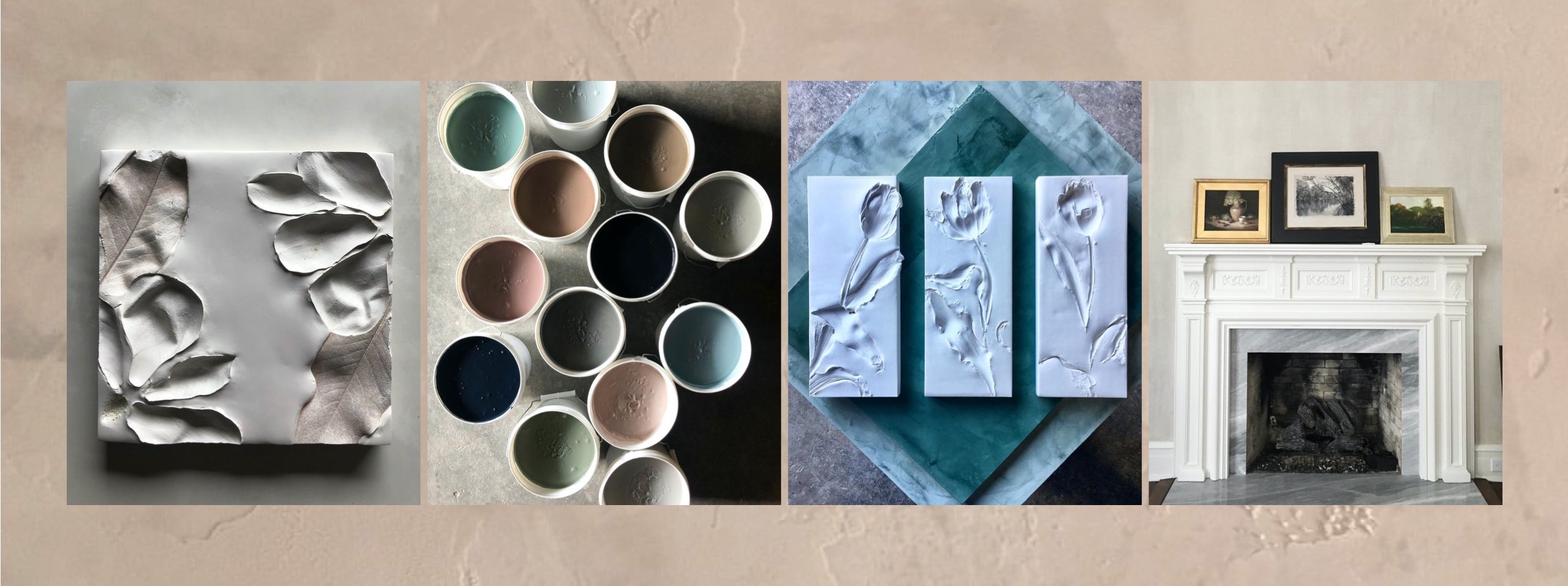
The Art of the Craft:Lauren Dillon
How a family plaster workshop in South Carolina is keeping a historic tradition alive, one swipe of the trowel at a timeThe story of Master of Plaster begins nine generations ago, in the late 17th century, with the renowned British plasterer Christopher Kempster (who, among other big-time projects, worked on St. Paul’s Cathedral in London). His heirs continued the practice through the 20th century until Michael Kempster, who himself helped with the restoration of Ellis Island, passed away from cancer in 2008. Mike’s friend and fellow plasterer Kirk Dillon took over the business, where his three daughters now work alongside him in various roles.
As executive designer, Lauren Dillon applies her background in architecture and design to projects built around the shop’s lime putty plasters—projects that include restoring the Philadelphia Lazaretto (a 1799 building that was America’s first quarantine hospital), building a children’s cancer research facility in Washington, D.C., and an array of private and commercial commissions.

“We work a few different ways,” she says. “On projects where we complete the installations, we are applying the plaster. A standard installation is at a minimum a three-coat installation, and the lime plasters we handcraft have to cure in between coat applications.” During this unique process, the plaster reabsorbs carbon dioxide from the air, which keeps it from drying out (like clay or paint), and helps give genuine lime plaster its beauty and depth. How long the process takes can depend on the temperature and the humidity of the environment where the plaster is curing, though generally Dillon plans for one coat per day, with the curing taking place overnight.

Throughout the process, she uses a hawk and a trowel—simple tools that have been around for hundreds of years. “One of the things that fascinates me about this craft is that in a world that is driven by technological advances, the tools of the plasterer really have not changed since the beginning,” she says. “The tools we are using today are in essence the same as those from the 1600s and earlier.” All of her plasters are made by hand in small batches in Columbia, South Carolina (where Kempster had relocated his business), and aged in-house. They offer several different lines with different formulations, plus custom plasters for clients. (One recent custom job included black sand mixed with crushed limestone for an architect in California.) Further, many plasters are tinted in-house to align with the needs of an architect, designer, or other client—a labor-intensive process that pays off in one-of-a-kind colors.

The results are something beautiful and authentic, a level of artisanship that will awe aficionados and laypeople alike, even if it can be hard to articulate exactly why. “Bringing earthen materials into an interior space, whether it’s commercial or residential, they light differently—plaster will read light in the morning differently, and then at dusk differently. It elevates the experience,” she says.
Elevating someone’s experience of their surroundings isn’t just a commercial venture for Master of Plaster—Dillon also leads regular workshops, in part to combat the idea that plaster is a dying art, but mostly to pass along what she has learned. “I feel like this is Mike’s legacy that I’m working to carry on,” she says. “It’s this body of knowledge and understanding and craftsmanship, and it’s not mine to keep.” Thanks to Master of Plaster, the tradition will carry on for another generation—or nine.
- Courtesy of Lauren Dillon






